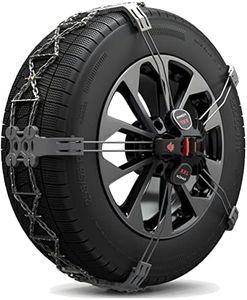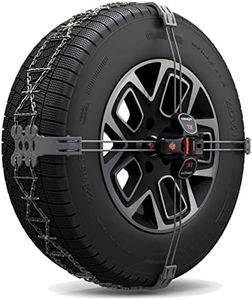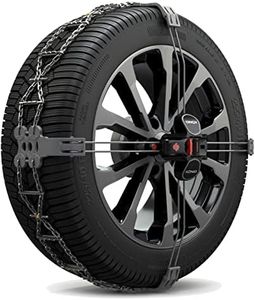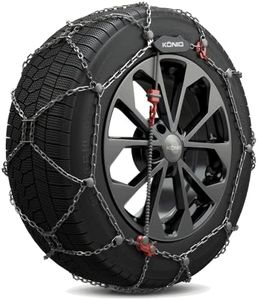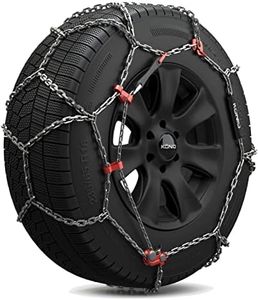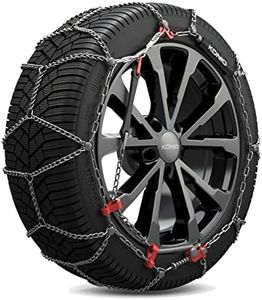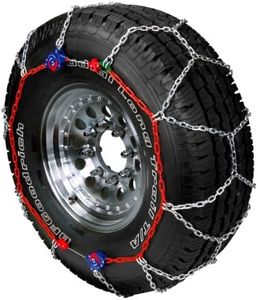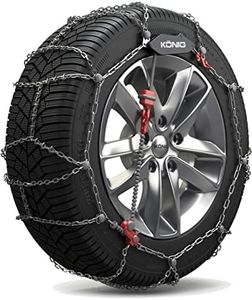We Use CookiesWe use cookies to enhance the security, performance,
functionality and for analytical and promotional activities. By continuing to browse this site you
are agreeing to our privacy policy
10 Best Snow Chains
From leading brands and best sellers available on the web.Buying Guide for the Best Snow Chains
Choosing the right snow chains can make a huge difference in both your safety and driving experience when tackling snowy or icy roads. The goal is to find chains that provide the best grip for your vehicle and driving conditions, while also being easy to install and suited to your car’s specifications. Before purchasing, always check your vehicle manual to confirm compatibility with snow chains, as some cars have restrictions.Tire Size CompatibilityTire size compatibility refers to whether the snow chains will properly fit your tires. This is crucial because chains that are too small or too large can be ineffective or even damage your vehicle. Tire sizes are usually printed on the tire’s sidewall and consist of a set of numbers and letters. Snow chains are made in various sizes to match these measurements. When choosing, match the chains directly to your tire size for the best fit; it's always better to double-check than to rely on 'one-size-fits-all' solutions.
Chain Type (Link Pattern)The link pattern is the design of the chain links that contact the road, which affects traction and ride comfort. Common patterns include ladder, diamond, and full-coverage. Ladder patterns give good straight-line traction but may be bumpier, while diamond patterns provide better lateral grip and a smoother ride; full-coverage chains offer the most contact and are best for very severe conditions. Choose a pattern based on the roads you expect—diamond for mixed and curvy roads, ladder for straightforward driving, and full-coverage only if facing extreme and continuous snow.
Material QualityThe quality of materials determines the chains’ durability and performance. Most chains are made of steel, but thickness, coating, and alloy matter. Hardened steel and rust-resistant finishes last longer and perform better on abrasive surfaces. For occasional use, you can consider lightweight or even composite materials, but if you expect regular or harsh use, stronger, thicker steel is preferable.
Ease of InstallationHow easy the chains are to put on and take off is important, especially if you may need to do it in cold or difficult conditions. Some chains have simple tensioning systems, color codes, or self-tightening features, which make setup quicker and cleaner. If you know you'll be fitting them in bad weather or want less hassle, look for user-friendly designs with straightforward instructions. Manual chains may be fine for people comfortable with hands-on assembly, while novices will want auto-tensioning or quick-fit styles.
Clearance RequirementsClearance is about how much space exists between your tires and the body or suspension of the car. Some vehicles, especially modern ones with tight wheel wells, cannot use thick or bulky chains; these require 'low-profile' or 'Class S' chains designed for minimal clearance. Always check your owner’s manual and measure your wheel well space. If in doubt, pick slim, low-clearance chains to avoid damaging your vehicle.
